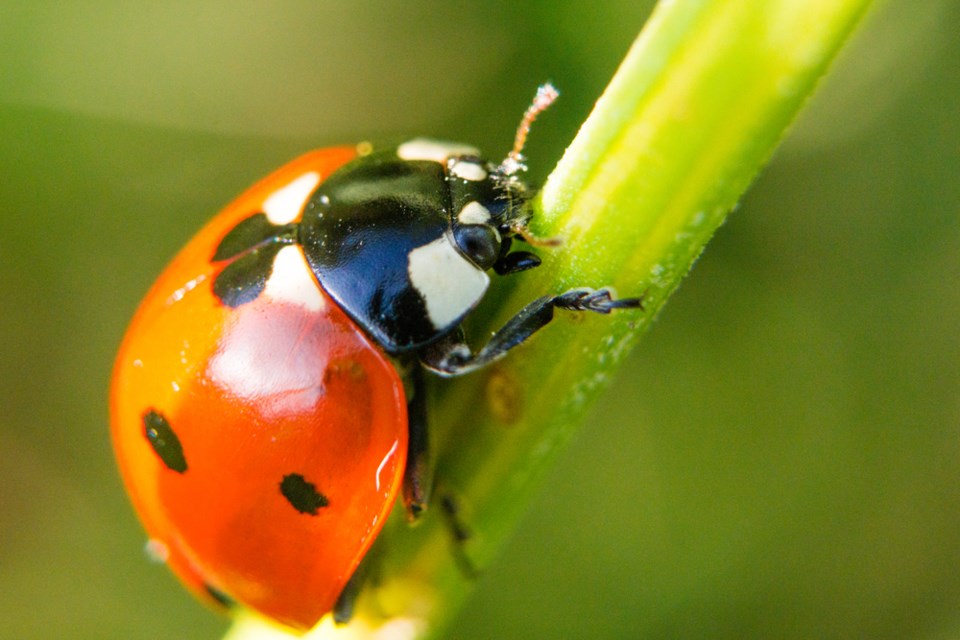The aphid population has exploded in Moose Jaw recently due to the hot weather, so the municipality has sent in an army of red and black soldiers to handle the problem.
More than 20,000 ladybugs were released throughout the community recently to start munching on the small green sap-sucking pests, explained parks gardener Sarah Regent. The parks department released the majority of the ladybugs in Crescent Park, while it deposited the rest in Palliser Heights, on the east side of the community and throughout South Hill, which is facing a particularly bad aphid problem this year.
Aphids are a nuisance since they produce a sticky liquid called honey dew, Regent said. This liquid builds up on the leaves, to the point where it starts falling onto the ground and onto vehicles and becomes an annoyance. In some cases mould can grow on the leaves if it builds up enough.
The parks department brought several bags of ladybugs — about 1,000 in each bag — to release in Crescent Park during the kickoff event. The beetles were let loose on the trunks of the trees, where they began working to destroy the nuisance insects. Once the ladybugs were finished eating, they then disbursed throughout the area.
This outbreak of aphids is the worst in the last five years, Regent said. The aphids themselves don’t necessarily cause problems to the trees; it’s the honey dew sap that is problematic.
“It’s quite a nuisance for people living near these trees,” she continued, “and it’s mostly elm trees that are impacted.”
Although ladybugs and aphids are small from a human perspective, the red and black beetles “are quite a bit bigger” than aphids. A ladybug is about one centimetre (0.4 inches) in size, or about one-half the length of a regular-size paper clip. An aphid is 0.3 millimetres (0.125 inches) in size, which makes it about one-fifth the size of the beetles — or the size of a pinprick on leaves.
Due to this size imbalance, ladybugs are able to eat 50 aphids a day.
“This is pretty good considering their size,” said Regent. “This helps knock back the population of aphids.”
The ladybugs are expected to continue eating the aphids for at least another month before they begin to die off. However, they will produce larvae, which are also effective aphid hunters. The parks department expects the beetles to continue working until the fall, before they go into hibernation.




